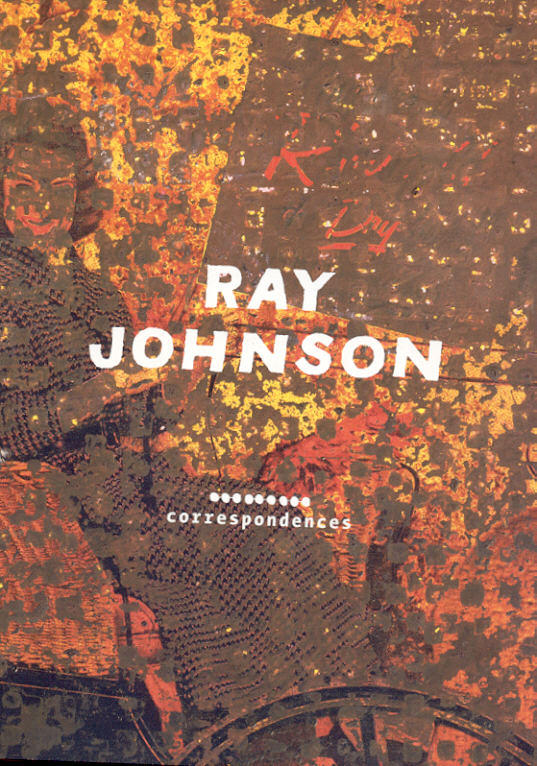
THE ART OF BOOKS & SMALL PRINT PUBLICATIONS RAY JONHSON Correspondences
Ray Johnson: Correspondences [Donna De Salvo] on Amazon.com. *FREE* shipping on qualifying offers. Ray Johnson: Correspondences
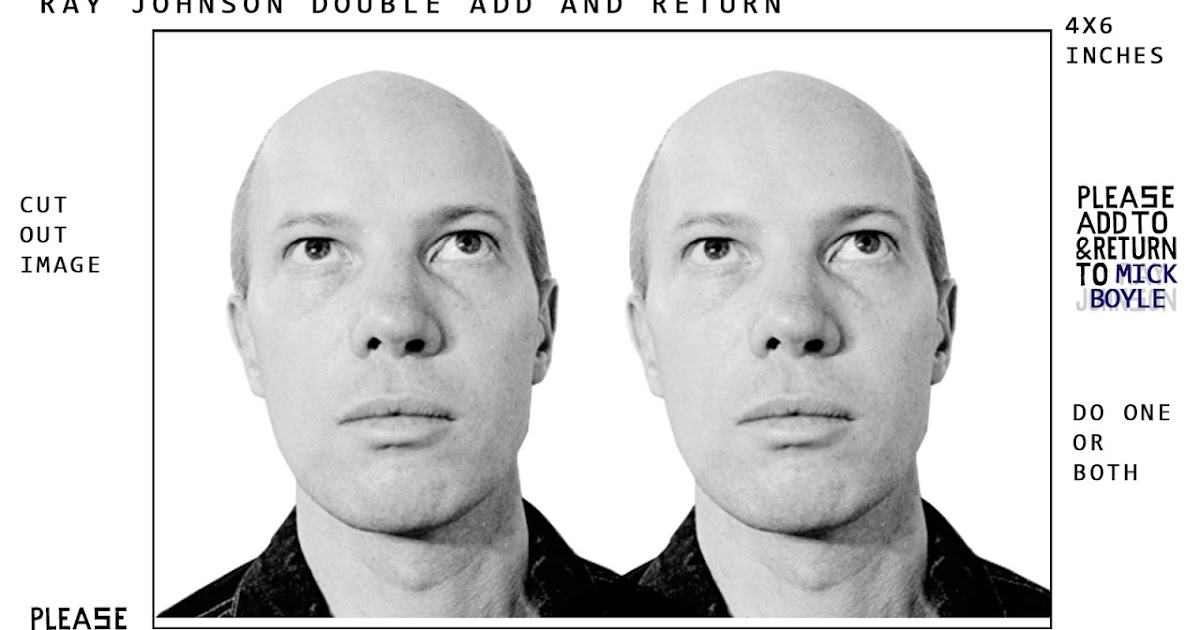
Mail Art Postcard Exhibition RAY JOHNSON DOUBLE ADD AND RETURN
1 5" document box. The Ray Johnson Correspondence to Robert Rauschenberg is comprised of just over forty correspondence works sent from Johnson to Rauschenberg from 1952 to 1965. The documents in this collection are typical of Johnson's Mail Art works in that they include small collages, "moticos," and short letters with absurdist prose.
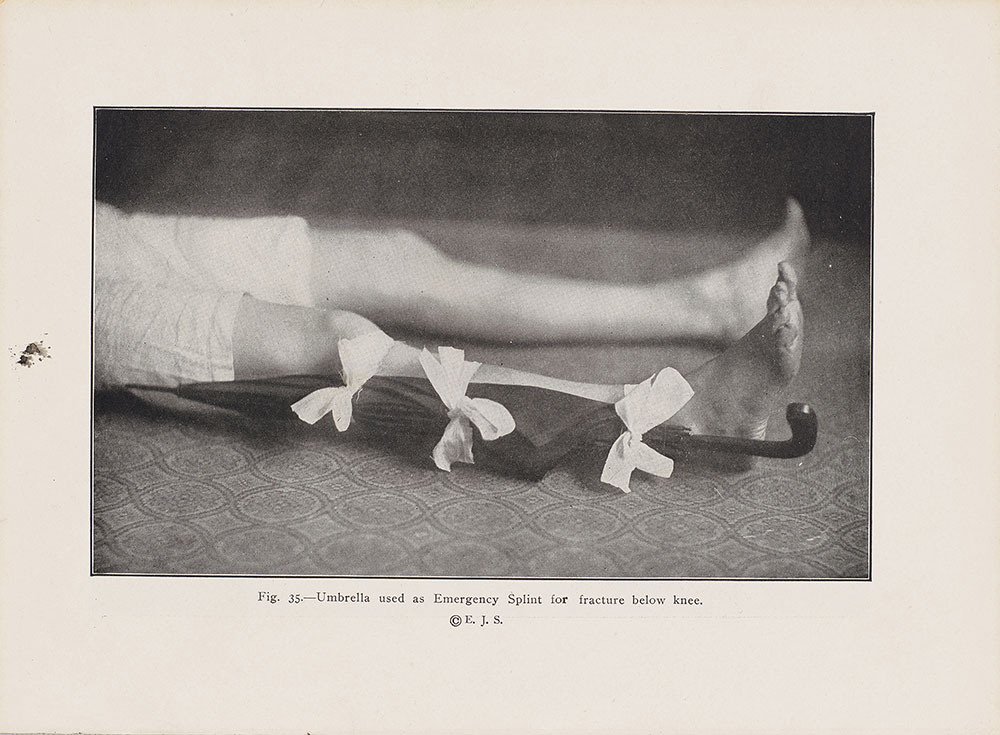
Photographic correspondences PLEASE SEND TO REAL LIFE Ray Johnson Photographs The
Miriam Kienle's detailed study of Ray Johnson's correspondence art is intimate and focused yet expansive—much like Johnson's work itself. Finally, we have a book-length, deeply researched account of Johnson's queer ways of making and communicating.

Untitled bee), 195960 from Ray Johnson Correspondences, Wexner Center for the Arts
Mail art by György Galántai, 1981. Mail art, also known as postal art and correspondence art, is an artistic movement centered on sending small-scale works through the postal service.It developed out of what eventually became Ray Johnson's New York Correspondence School and the Fluxus movements of the 1960s. It has since developed into a global, ongoing movement.

Visiting Scholar Lecture Correspondences / On mail art and the work of Ray Johnson YouTube
By the eighties, Johnson was a legend in the artistic community. Ray correspondences, offers the first opportunity for in-depth examination of the work of an artist who reflected and dissected many of the aesthetic, cultural, and theoretical preoccupations of the last forty years; a figure whose impact and influence will finally be made known.

Ray Johnson & The New York Correspondence School A Table by Printed Matter Printed Matter
Ray Johnson (1927-1995), Untitled (Nothing with Brancusi), Undated, Ink on book page, 9 1/2 × 7 1/2 in. (24.13 × 19.05 cm),. Over the years, Johnson inducted hundreds or thousands of recipients into what he called the New York Correspondence School by mailing them oblique yet personalized messages. These altered book and magazine pages.
.jpg?mode=max)
Ray Johnson (19271995)
In the mid-1950s, the New York based artist Ray Johnson (1927-1995) initiated a new form of artistic practice called "mail art" that utilized the postal system as an alternative site for the distribution of art.. His "Correspondence Show" at Western Illinois University in 1974, for example, used the queer art zine FILE (a pun on the.
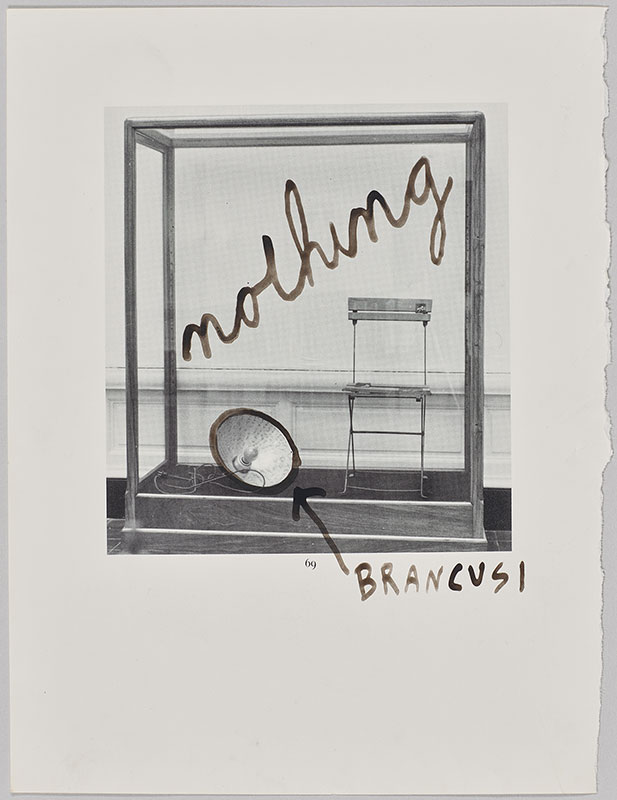
Photographic correspondences PLEASE SEND TO REAL LIFE Ray Johnson Photographs The
Raymond Edward "Ray" Johnson (October 16, 1927 - January 13, 1995) was an American artist. Known primarily as a collagist and correspondence artist, he was a seminal figure in the history of Neo-Dada and early Pop art and was described as "New York's most famous unknown artist". Johnson also staged and participated in early performance art events as the founder of a far-ranging mail art.

Pin on Ray Johnson
I am Ray Johnson, contact me at 516-676-3150." The New York Correspondence School, loosely, is a group of friends and sort of a network of makers who are sending things in the mail and the person who is sort of the primary protagonist and sort of the impresario of this exchange in this network is Ray Johnson.
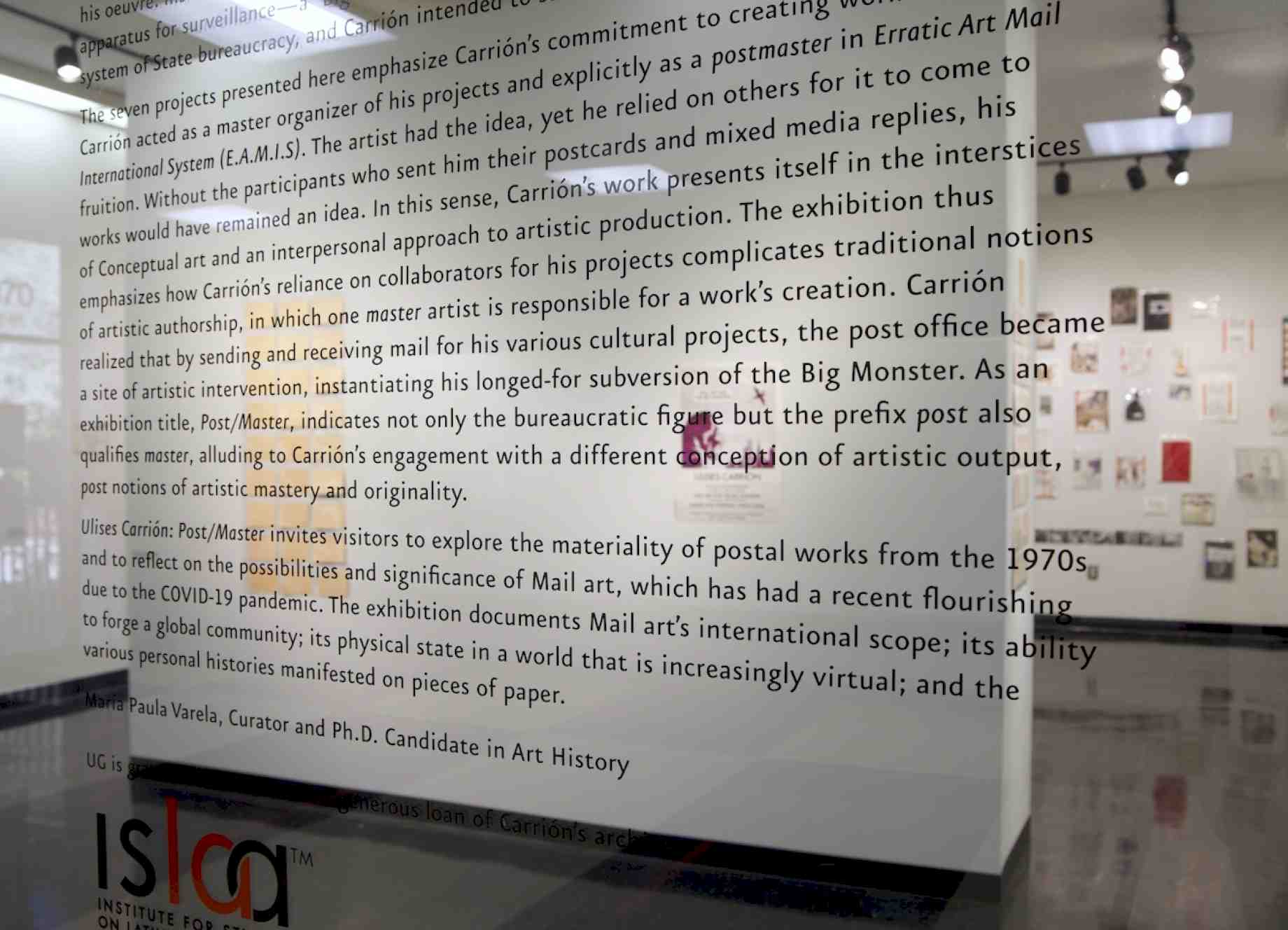
Correspondences/ On Mail Art and the Work of Ray Johnson Events College of the Arts
Ray Johnson: correspondences, offers the first opportunity for in-depth examination of the work of an artist who reflected and dissected many of the aesthetic, cultural, and theoretical preoccupations of the last forty years; a figure whose impact and influence will finally be made known.
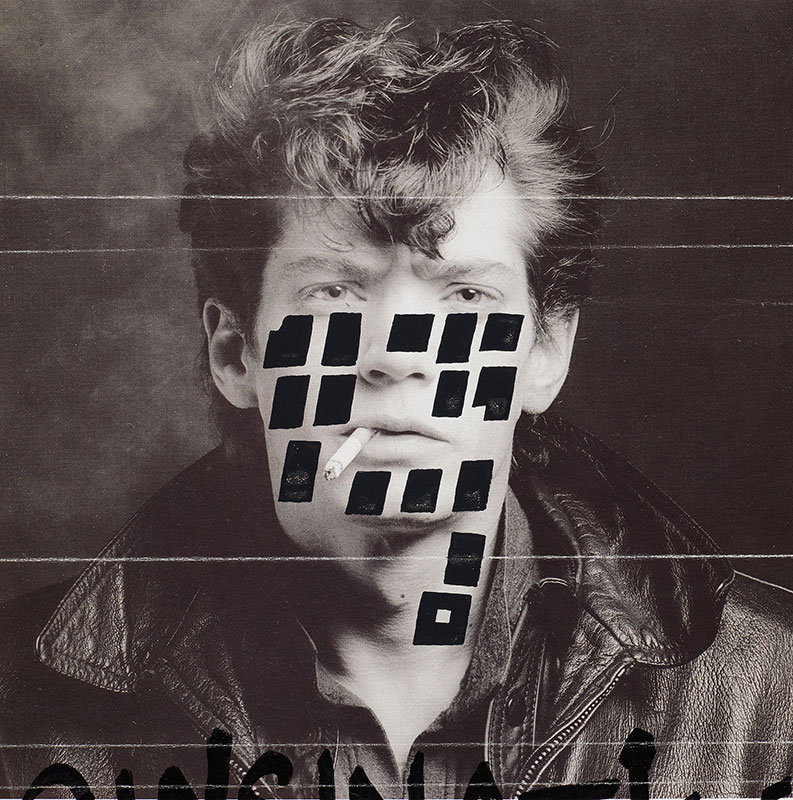
Photographic correspondences PLEASE SEND TO REAL LIFE Ray Johnson Photographs The
Ray Johnson. Elvis Presley #1 (Oedipus), 1956-58. Promised gift of The William S. Wilson Collection of Ray Johnson. Date of birth. 1927. Date of death. 1995. Once described as New York's "most famous unknown artist," Ray Johnson was a renowned maker of meticulous collages and a pioneering figure in the worlds of Pop, Fluxus, Conceptual.

Ray Johnson Correspondences by Donna De Salvo & Catherine Gudis D & E Lake Ltd
In 1995, the resolutely reclusive Ray Johnson reemerged into the spotlight when he died in a mysterious and spectacular way, leading to the discovery of thousands of works of art in his house. Drawing upon this vast trove, Donna De Salvo, the Wexner Center's Curator at Large, has organized Ray Johnson: Correspondences, the first comprehensive exhibition to be mounted (with the complete.

Mail Art Postcard Exhibition RAY JOHNSON DOUBLE ADD AND RETURN
Ray Johnson: Correspondences. Ray Johnson.. This is a catalog of Ray Johnson's exhibition at the Whitney and elsewhere in 1999. Mr. Johnson famously intentionally drowned himself on January 13th in 1995 at the age of 67. For a man whose turned his life into his art, his suicide with its nods to the number 13 and the preparation he did of his.
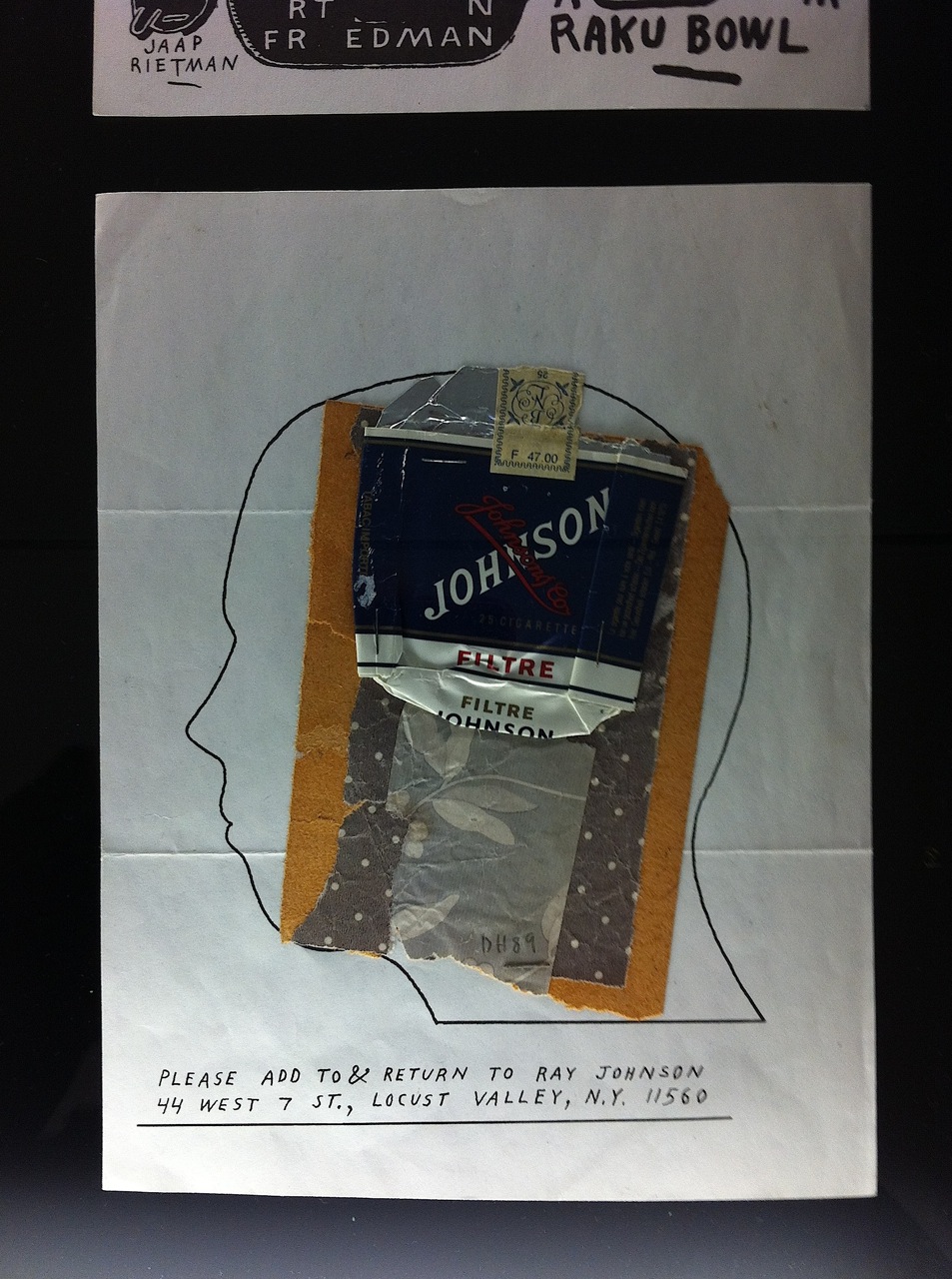
Artblog Letter From Paris Four great shows you might have missed and two American friends
This is the catalogue for an important retrospective of Ray Johnson's work at the Whitney Museum of American Art from January 14 to March 21, 1999.. De Salvo, Donna and Catherine Gudis, eds. Ray Johnson: Correspondences. Columbus, OH: Wexner Center for the Arts, The Ohio State University, 1999. Ray Johnson Estate 34 East 69th Street New York.
.jpg?maxwidth=2085&maxheight=1950)
Ray Johnson (19271995)
It is generally and correctly understood among those who participated in the crest of the mail art movement in the late sixties and early seventies that Ray Johnson was the founder of the New York Correspondence School and foremost proponent of mailing activity. And while there have been a few exhibitions enthusiastically supported by growing numbers of mail artists, there has not been proper.
.jpg?maxwidth=1120&maxheight=700)
Ray Johnson (19271995)
Miriam Kienle. Queer Networks: Ray Johnson's Correspondence Art. (University of Minnesota Press, 2023) One morning last month, on my way to work, I was thinking about the artist Ray Johnson as I rushed up the imposing stairs of the James A. Farley Building to the United States Post Office. I carried with me a plastic sack I had taped up to.